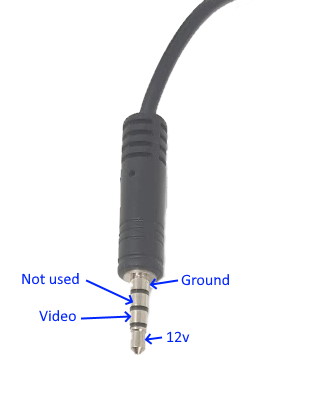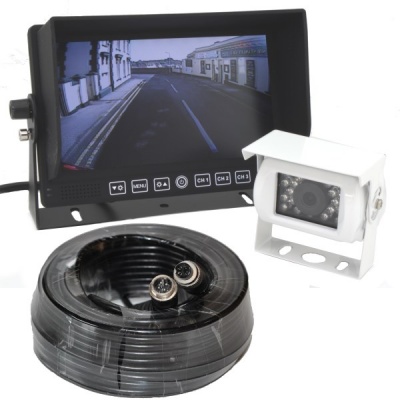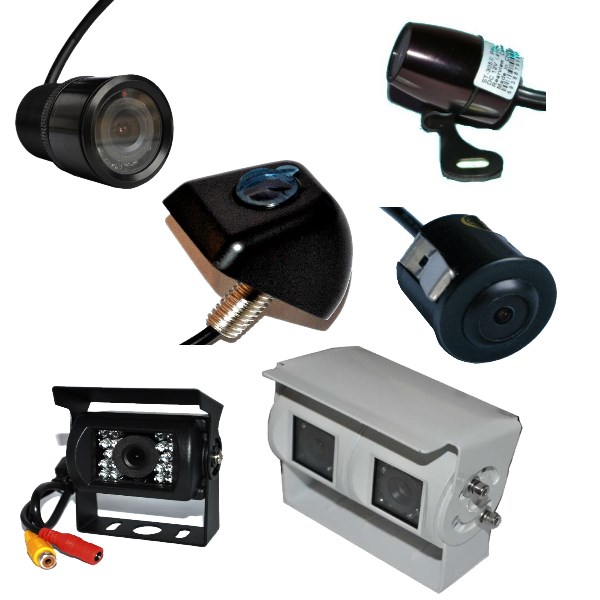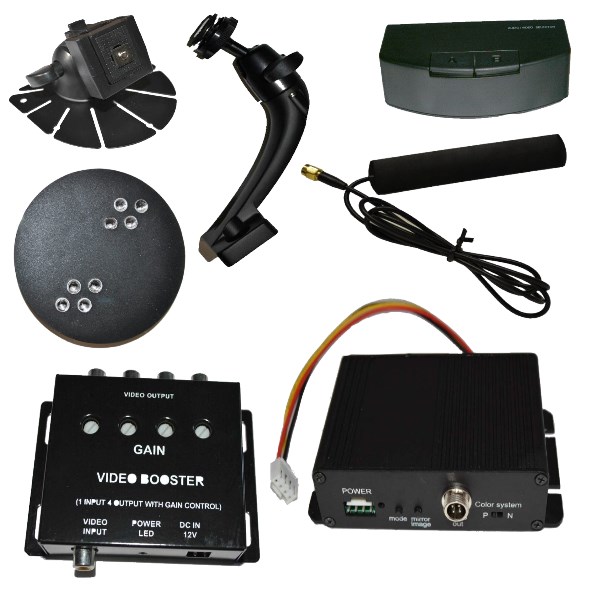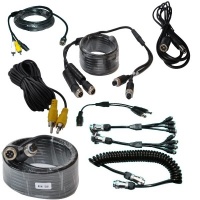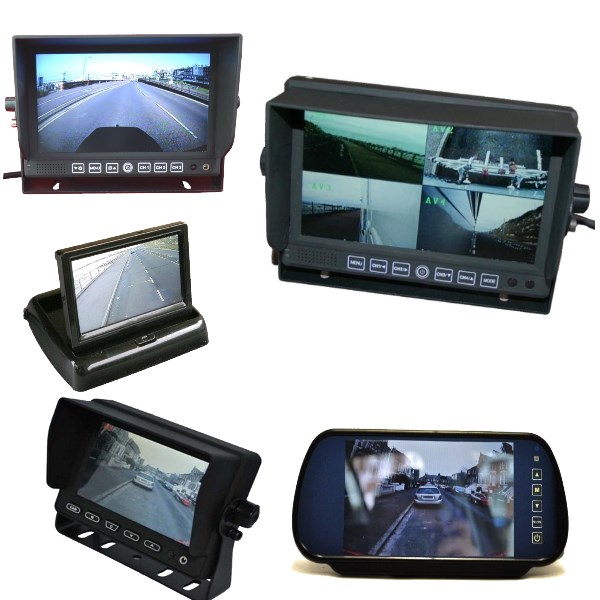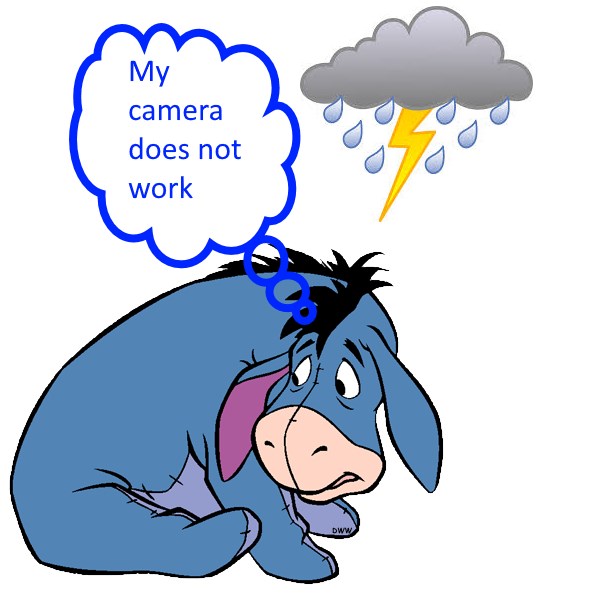Pre-wired vehicles
This guide is to help you identify the connector of an existing camera system and covers the wires running from the camera at the back to the monitor wiring harness at the front.
A lot of motorhomes come with cables already fitted or they have camera systems where you need to replace either the camera or monitor. The biggest problem is there has never been a standard produced for the wiring of a reversing camera. We have seen lots of variations in connector and also even if you match the connectors there is no guarantee they are wired the same. If you get it wrong then there is potential to damage the camera and/or monitor. In this help sheet we will cover the main connectors we have seen.
Phono or RCA connectors
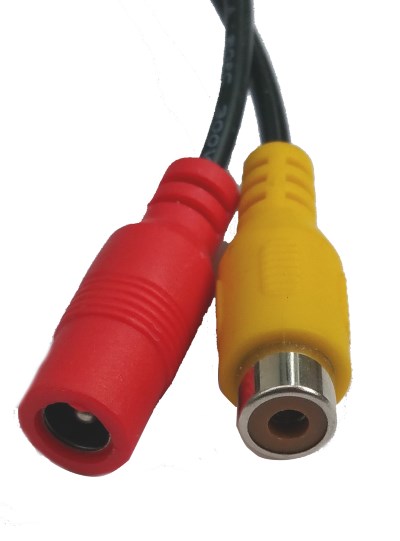 These are the connectors you will find on cameras with RCA (phono) connectors. The red coloured one is a male power connector. These are almost always 2.1/5.5mm although you can get 2.5/5.5mm but it is very rare. The 2.1 refers to the size of pin in the middle of the connector and the 5.5 is the outer diameter. The red plug can often be coloured black, but will look the same.
These are the connectors you will find on cameras with RCA (phono) connectors. The red coloured one is a male power connector. These are almost always 2.1/5.5mm although you can get 2.5/5.5mm but it is very rare. The 2.1 refers to the size of pin in the middle of the connector and the 5.5 is the outer diameter. The red plug can often be coloured black, but will look the same.
The yellow it the RCA female connector. Although yellow is usually for video we have come across these coloured white, red or black. If your camera has 2 RCA connectors and one is white then that is usually for sound. If your pre-fitted cable is like this then getting a replacement camera of monitor is very easy. We do have adaptors to change the gender of the RCA connector and also ones to convert into a 4 pin aviation style connector.
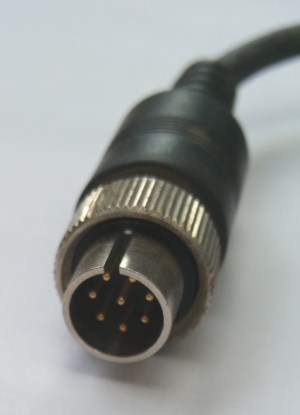
This connector was found on a camera supplied with an agricultural machine. The replacement camera was more than the cost of a complete quad camera reversing system. There are times when replacing everything is the only option available. We do meet connectors like this that are completely bespoke to a particular brand. The idea is that you are fixed with having to buy replacements off them. In many cases the replacements are several hundred pounds for a camera that is no different to the much cheaper ones. One way around this is to create your own adaptor, but we will explain this later on.
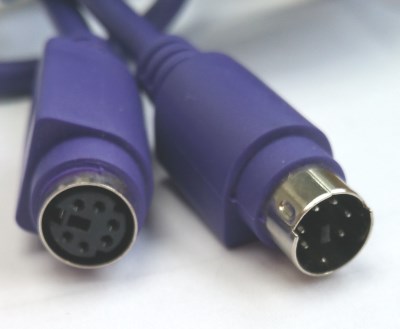 The blue connectors are PS/2 connectors. Note the plastic rectangular locator between the pins. These are the most common type of pre-fitted cable you will come across. They are identical to the connector used for computer mice and keyboards before USB came along. In the early days these were simply longer versions of a PS/2 extension cable. On many you will find arrows marked on the connector. A single arrow is for a one way cable (it only has 4 pins connected) and 2 arrows in opposite directions are for a two way cable (all 6 pins connected). Many of the early cables were not designed to carry video and had no shielding on the inner cores. I have seen these with as little as 2 inner cores plus a bare shield. We do sell adaptors for these cables that will convert them into a 4 pin aviation style extension cable. If used you will need to check continuity down the cable to rule out if you have a one way cable. You cannot rely on the markings as we have come across cables with one arrow that has all the pins connected. The adaptors need the male connector to be on the camera.
The blue connectors are PS/2 connectors. Note the plastic rectangular locator between the pins. These are the most common type of pre-fitted cable you will come across. They are identical to the connector used for computer mice and keyboards before USB came along. In the early days these were simply longer versions of a PS/2 extension cable. On many you will find arrows marked on the connector. A single arrow is for a one way cable (it only has 4 pins connected) and 2 arrows in opposite directions are for a two way cable (all 6 pins connected). Many of the early cables were not designed to carry video and had no shielding on the inner cores. I have seen these with as little as 2 inner cores plus a bare shield. We do sell adaptors for these cables that will convert them into a 4 pin aviation style extension cable. If used you will need to check continuity down the cable to rule out if you have a one way cable. You cannot rely on the markings as we have come across cables with one arrow that has all the pins connected. The adaptors need the male connector to be on the camera.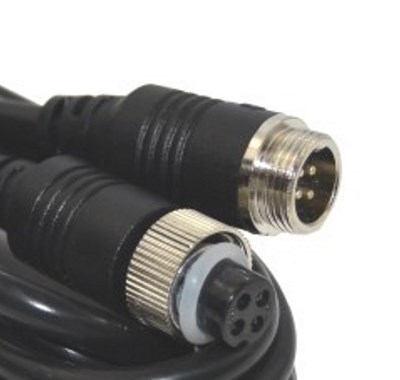
One the right is the most common type of connector that are aftermarket reversing cameras. The connector with the white O-ring is the female and has a locking collar. The top connector is the male. Most of our systems use this style of connector as they are reliable and waterproof. 97% of reversing camera systems will have the female connector on the camera. We have seen some with the camera having a male connector. We do a straight through adaptor to change the gender, but we have come across some of these that require a cross-over adaptor to get the pin definition correct. We can advise on how to do this if the situation arises.
We have a diagram showing the pin outs for this connector further on.
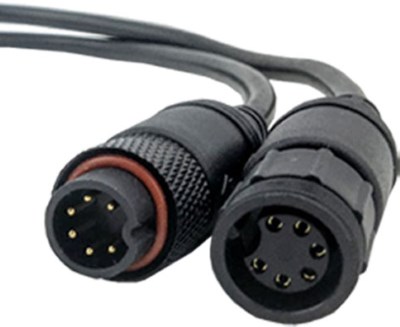
Another type of connector often fitted to motorhomes such as Bailey is the Waeco version. The photograph on the left shows the most recent version which uses a 6 pin connector with a locking ring. We do have adaptors to convert this into one of our 4 pin extension cables or 4 pin Y-cables depending if you need a twin lens camera. They are used in pairs as they have used 3 different pins for the video depending on the system. Waeco themselves have produced a 26 page booklet of all their adaptors as they have never set a standard connector for their systems. In this country it is almost impossible to find the various adaptors shown in the booklet.
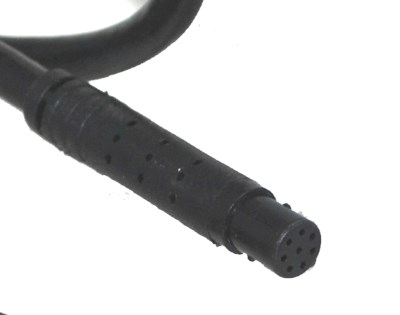
This connector is 8mm in diameter. You can get examples that are even smaller in diameter. It is generally called the BMW connector by many suppliers. We use it as a link in some of our cameras and cables. We have added tape to the ends of these to help identify them. On our cameras they will always go to a 4 pin aviation connector. They will not fit other peoples version of this connector as there are too many variations of pin outs. If you see this connector and there is not a 4 pin aviation connector a little further along the you will need to make an adaptor using the old camera.
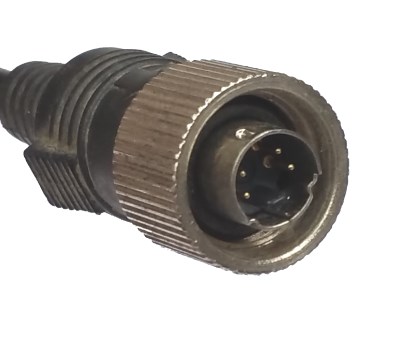
On the left is an example of a S-video style connector with a locking ring. The locking ring is not always present, with it just being a simple push fit. It is not a relatively common connector so we have not had an adaptor made up for it. If you have one of these then making an adaptor from the old camera is the way forward.
Making the adaptor in theory should be fairly straight forward. You would hope to find they have used red +ve, black -ve and yellow video. There are a number of potential pitfalls though the most common being they never used this colour code on the existing wiring. We often see white used for the video and have even seen it used for the 12V. With care and a mulitmeter you can usually work out the wiring.
We are seeing a number of cameras that use 2.5 or 3.5mm jack plugs. These can either have a cable that runs the length of the vehicle or go to an adaptor that has RCA and power connections. We have identified what each pole does on the image for one example. You may find you have 3 poles instead of 4 or they have wired the jack plug differently. As 12v can cause damage to the camera sensor it is logical not to complete a circuit until the plug is fully inserted. It is also easier to wire in the ground on the last pole as in the photograph due to the need for an outer shield. We would therefore expect most of these plugs to be wired up in this fashion. At the cheaper end of the market factories often make these without the technical knowledge to do things logically!!!